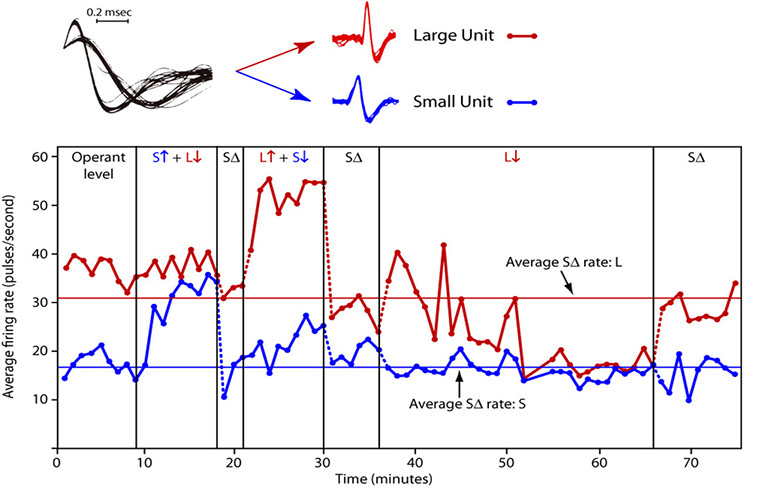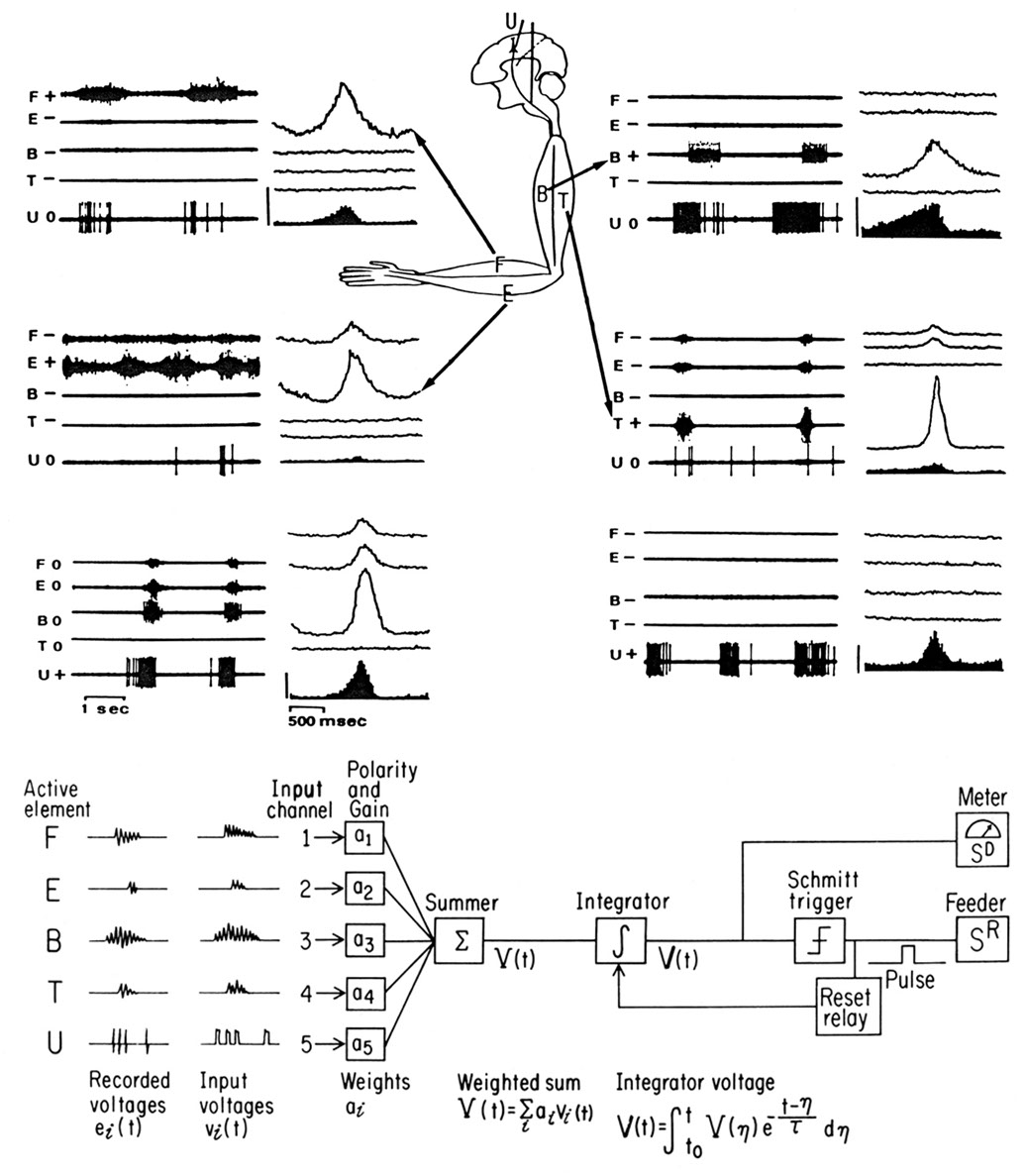
Volitional control of neural activity
The relation between motor cortex cells and limb muscles was investigated in monkeys trained to volitionally control the activity of cortical cells and muscles with neurofeedback. Monkeys quickly learned to increase and decrease cortical cell activity when given feedback in the form of a meter whose deflection signaled the proximity of activity to reward [1] (Fig. 1). They could differentially control the firing rates of two neighboring neurons within minutes (Fig. 2). Moreover, monkeys could learn to activate different muscle groups in isolation and to quickly dissociate activity of motor cortex cells and correlated muscles when rewarded for such dissociation [2] (Fig. 3). These experiments were the first to demonstrate direct control of a meter arm through volitional modulation of brain cell activity, the precursor of present-day brain-machine interfaces [3].
The activity of cortical cells could also be operantly conditioned during free behavior by delivering contingent intracranial reinforcement via a head-fixed closed-loop brain-computer interface [4].
References
- Fetz EE, and Baker MA, Operantly conditioned patterns of precentral unit activity and correlated responses in adjacent cells and contralateral muscles, Journal of Neurophysiology 36:179-204, 1973. [PDF]
- Fetz EE, and Finocchio DV, Correlations between activity of motor cortex cells and arm muscles during operantly conditioned response patterns, Experimental Brain Research 23:217-240, 1975. [PDF]
- Fetz EE, Volitional control of neural activity: implications for brain-computer interfaces, Journal of Physiology (Lond.), 579.3: 571-579, 2007 PMC3156089. [PDF]
- Eaton RW, Libey T, Fetz EE, Operant conditioning of neural activity in freely behaving monkeys with intracranial reinforcement, Journal of Neurophysiology 117 3: 1112-1125 2017. [PDF]

Figure 1. Operant conditioning of increases in cortical cell activity [1]

Figure 2. Differential control of firing rates of two neighboring neurons [1]

Figure 3. Operant conditioning of patterns of cell and muscle activity [2]